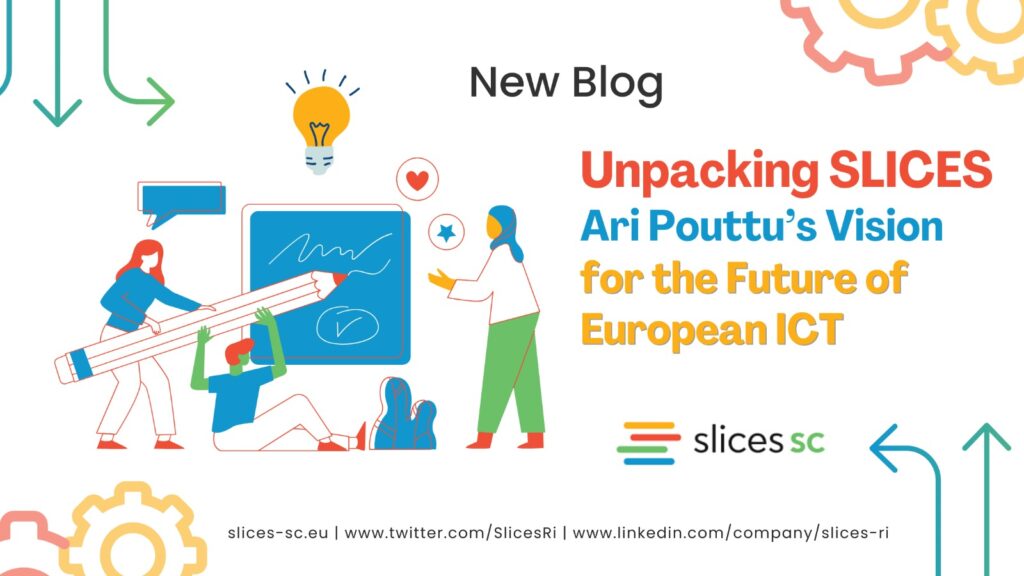Unpacking SLICES: Ari Pouttu's Vision for the Future of European ICT

Imagine a world where technology is so advanced that it’s no longer just about connecting people; it’s about creating a seamless, inclusive, and sustainable digital society. That’s the vision Ari Pouttu paints as he discusses the SLICES initiative. As the Vice Director of the 6G Flagship programme and a professor at the University of Oulu, Finland, Pouttu brings over a decade of experience in 5G and 6G research to the table. His team’s 5G test network, constructed in 2015, has been instrumental in developing a range of applications and network designs. But what makes SLICES more than just another acronym in the tech world?
The Data-Backed Why
SLICES (Scientific LargeScale Infrastructure for Computing/Communication Experimental Studies or could also be dupped as Smart Large Instant Controlled Experimental Spaces) is more than an acronym. It represents a deliberate endeavour to cultivate innovation in Information and Communication Technology (ICT). As Pouttu explains, this initiative brings forth three key benefits:
Collaborative Research: The initiative aims to pool expertise and infrastructure, thereby increasing research efficiency.
Ecosystem of Stakeholders: It’s not just about tech; it’s about bringing together stakeholders from different verticals to create targeted solutions and digital strategies for companies and societies.
Funding Clarity: Being part of the ESFRI roadmap offers a more straightforward path for future funding in ICT research.
The Numbers Speak
Let’s break it down. The 5GTN network has been used for a “multitude of application designs, network designs, testing tool experimentation and waveform designs,” according to Pouttu. That’s not just tech jargon; it’s a
quantifiable impact on sectors like health, energy, and heavy machinery, with more than 100 companies and an even larger number of academic partners joining us with tens of projects worth 40 M€ during the last ten years.
Future Research Avenues: Beyond the Obvious
SLICES isn’t just about what we can do now; it’s about charting the course for what we could achieve in the future. Pouttu outlines two initial avenues for development in wireless research infrastructures. The first, known as the “Evolutionary Path,” focuses on near-term innovations that align with the standard releases of 3GPP. This path could impact a range of sectors, from enabling remote surgery in healthcare to facilitating micro-level energy production. The second avenue, “Softwarization of Networks,” delves into the potential of Open RAN and open-source solutions, exploring critical aspects like energy consumption, stability, and latency in mobile cellular systems.
The third and perhaps most intriguing avenue Pouttu highlights is what he calls the “Disruptive 6G Path.” This goes far beyond the concept of faster internet. It opens the door to transformative technologies like sensing and imaging in radio systems. These advancements could enable breakthroughs such as holographic communications and real-time metaverses, fundamentally altering how we interact with technology and the world.
The European Angle: Why It Matters
Europe has been lagging in high-performance computing and machine learning. SLICES is more than a research initiative; it’s a strategic move. It aims to make European societies more competitive by treating ICT technologies as critical infrastructure.
SLICES Summer School and Researcher Mobility Days
The SLICES Summer School aims to introduce and familiarise participants with the pan-European Scientific Large-Scale Infrastructure for Computing/Communication Experimental Studies Research Infrastructure (SLICES-RI). It offers unique experimental research capabilities and fosters the skills and knowledge needed for conducting experiment-based research. A key objective is to acquaint the audience with the myriad possibilities that SLICES-RI offers to both the research community and third parties.
In June 2023, the three-day Summer School in Oulu, Finland, attracted over 60 participants. The annual event is set to move to Italy next year. To complement the Summer School, SLICES-SC organised this year’s Researchers Mobility Day. The event encouraged researchers and professionals from both academia and industry to visit a SLICES-RI site in person. Participants had the opportunity to learn how to utilise the site’s research facilities and even conduct one or more experiments, gaining hands-on experience with the research infrastructure in the areas of 3D modelling, Edge computing, and drone-assisted wireless measurements.
The Takeaway
As Professor Ari Pouttu articulated, the SLICES initiative isn’t just another tech initiative. It’s a well-thought-out strategy for advancing ICT in an inclusive, trusted, and sustainable way. And in a world where technology is increasingly at the heart of everything we do, that’s not just important; it’s essential.
Watch a video about the Slices Initiative by Professor Ari Pouttu.
About Ari Pouttu
Prof. Ari Pouttu serves as the Vice Director of the 6G Flagship programme and brings a wealth of scientific and engineering expertise to the table. With a background in various ICT domains, he has led projects that have contributed to advancements in military radio communication, radar systems, embedded device networks, and future wireless radio communications, including cellular systems and cognitive networks.
Pouttu has published over 60 papers in conferences and journals focused on wireless communications and holds two patents. He led the Centre for Wireless Communications at the University of Oulu from 2006 to 2012. Currently, he heads a research group as a professor, focusing on dependable wireless solutions across various sectors such as energy, industry, health, and automotive. This includes work on 5G and 6G solutions.
He is the principal investigator for the 5G Test Network (5GTN) experimental research and co-principal Investigator of numerous H2020 and HE projects. In his role as Vice Director, he is instrumental in steering the Finnish national 6G Flagship programme.

